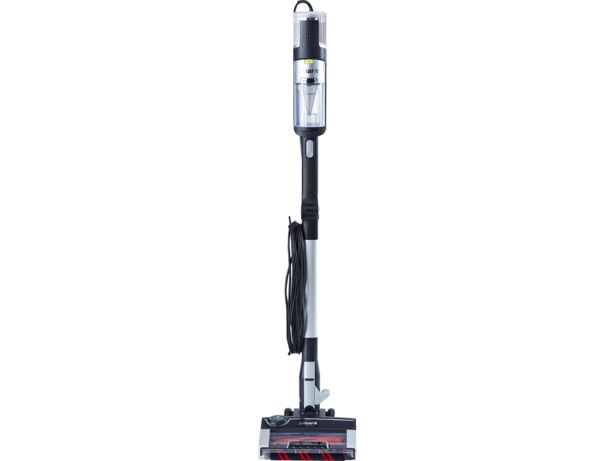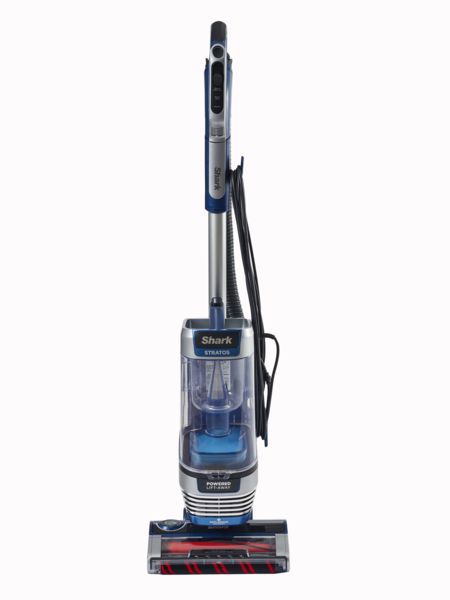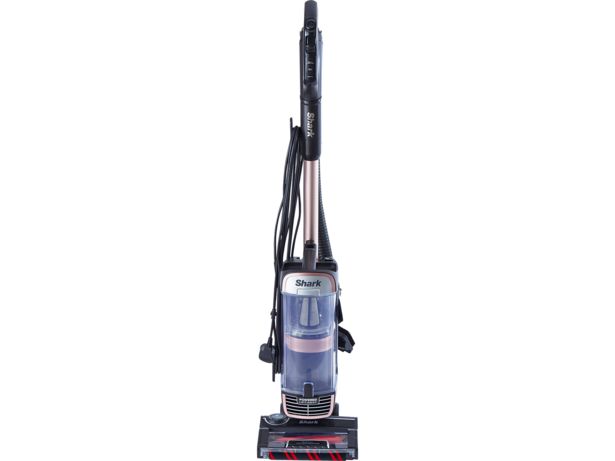Which vacuum cleaner brand to buy in 2024

Blocked filters, a complete loss of suction and faulty brushes are the most common vacuum cleaner problems, according to our survey of 7,740 vacuum cleaner owners in the UK.
Knowing which brands develop the most faults and how long a model can be expected to last is vital when you're buying a new vacuum cleaner. That's why we ask thousands of people each year whether they're pleased with their vacuum cleaner, or if they've experienced problems.
We've got data on the biggest vacuum cleaner brands – AEG, Bosch, Dyson, Electrolux, Hoover, Miele, Numatic, Panasonic, Samsung, Sebo, Shark and Vax – so we can tell you which to choose, and which to avoid.
Vacuum cleaner brands rated
The table below summarises this year’s results. Brands are ranked by their customer score, which relates to whether customers would recommend the brand.
The 'proportion faulty' is the percentage that experienced a fault and the 'proportion repaired or replaced' is the percentage of dishwashers that were fixed or thrown away due to a fault.
Only logged-in Which? members can view which brands members are most satisfied with in the table below. If you're not yet a member, join Which? to get instant access.
| Brand | Customer score | Proportion faulty in seven years | Proportion repaired or replaced due to a fault |
|---|---|---|---|
Sign up to reveal Get instant access to this and all our scores and recommendations. Unlock tableFirst month £5, then £10.99 per month, cancel at any time Already a member? Log in | 85% | 8% | 4% |
| 83% | 16% | 9% | |
| 82% | 10% | 4% | |
| 80% | 13% | 8% | |
| 74% | 23% | 13% | |
| 73% | 17% | 11% | |
| 73% | 38% | 19% | |
| 69% | 32% | 20% | |
| 65% | 29% | 15% | |
| 65% | 27% | 11% | |
| 63% | 40% | 21% | |
| 58% | 39% | 28% |
Sign up to reveal
Get instant access to this and all our scores and recommendations.
First month £5, then £10.99 per month, cancel at any time
Already a member? Log in
- Table notes: The customer score, proportion faulty and proportion repaired or replaced are based on a survey of 7,740 people who own vacuum cleaners, conducted in September 2022.
- The proportion faulty and proportion repaired or replaced are based on appliances bought in the past seven years.
Decided on a brand? See the best vacuum cleaners to find out the top models we recommend.
Best vs worst vacuum cleaner brands
As the table below reveals, there is a big difference between the brands with the best customer score (85%) and the worst (58%). There are also big gaps between the average test scores, fault rate and proportion of products that had to be repaired or replaced.
| Best | Worst | |
| Customer score | 85% | 58% |
| Proportion faulty in first seven years | 8% | 40% |
| Proportion repaired or replaced due to a fault | 4% | 28% |
Which vacuum cleaner brand is the most reliable?
You would be right to expect your vacuum cleaner to last for seven years. However as you can see from our table, around a third of vacuum cleaners from the faultiest brand had to be repaired or replaced within this time.
The table shows that the difference between the most and least faulty brands is very significant: the worst brand from our survey was more than seven times as likely to need to be repaired or replaced compared to our best brand.
| Proportion repaired or replaced due to a fault | |
|---|---|
| Best brand | 4% |
| Average for all vacuum cleaners | 11% |
| Worst brand | 28% |
Verdict: vacuum cleaner brands in-depth
We've pulled together fault data, customer insight and average performance in our independent vacuum cleaner tests to give you an in-depth look at each brand.
Only Which? members can log in to get our verdict on the brands below and whether they're worth buying.
If you're not yet a member, join Which? to get instant access our verdicts on these vacuum cleaner brands: AEG, Bosch, Dyson, Hoover, Miele, Numatic, Panasonic, Sebo, Shark, Vax and more.
Know which vacuum cleaner brand you want? Use the links to go straight to our reviews and find your ideal model:
- AEG vacuum cleaner reviews
- Hoover vacuum cleaner reviews
- Miele vacuum cleaner reviews
- Numatic vacuum cleaner reviews
- Sebo vacuum cleaner reviews
- Shark vacuum cleaner reviews
- Vax vacuum cleaner reviews
The three most common vacuum cleaner faults

Good maintenance habits – such as regularly emptying the dust container or dust bag, and removing hair and debris from the brush bar – can help you avoid the three most common vacuum cleaner faults.
1. No suction or deteriorating suction (24% of all reported faults)
A complete loss of, or noticeably deteriorated, suction could be a result of reduction in motor performance, blocked airways or filters within the vacuum cleaner, or a clogged brush bar.
To find out how to restore suction in your vacuum, watch our video guide on how to fix a vacuum cleaner that's lost suction.
2. Brush not working properly or at all (13%)
Assuming the brush bar is clear of hair and debris, which could otherwise clog it up, the most likely cause of this fault is a broken vacuum cleaner belt. These elastic belts are cheap to buy and relatively easy to fit yourself in most cases.
3. Blocked filters (12%)
You can prevent filters getting blocked by washing them regularly. Most manufacturers advise rinsing your filter in cold water once a month and allowing it to dry for up to 48 hours on a windowsill.
Washing your filter with warm water, or not letting it dry properly, could damage the filtration system, allowing fine dust particles to escape while you clean.
How we calculate the best and worst vacuum cleaner brands
Which? has a wealth of information on the UK's favourite vacuum cleaner brands.
Each year, we ask Which? members and the public to tell us about the domestic appliances they own – from how likely they'd be to recommend a brand, to how long a product lasted once they got it home.
This year, more than 17,545 people told us about more than 70,000 products, including 7,740 vacuum cleaners.
Our survey, combined with our independent testing data, means we can give you unique insight into which vacuum cleaner brand you should buy.
For more on what it takes to be a Best Buy, head to How we test vacuum cleaners.
This article uses insights from the Which? Connect panel, collected from research activities with our members. Find out how to get involved


